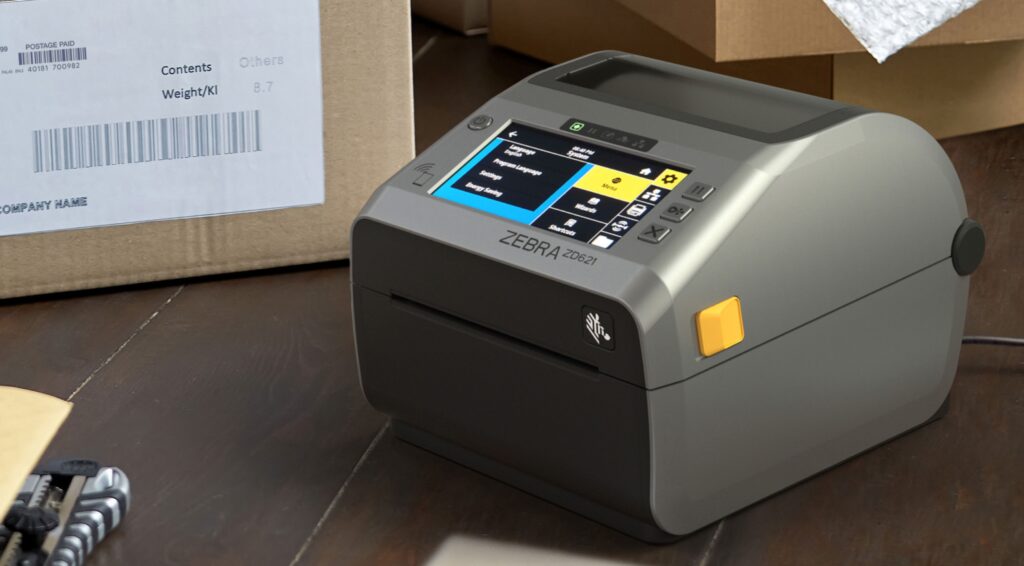11
Oct
The Ultimate Guide to Barcode Printers: Everything You Need to Know

In today’s fast-paced business environment, efficiency and accuracy are paramount. Barcode printers have become an essential tool across various industries, including retail, logistics, healthcare, and manufacturing. These devices simplify inventory management, asset tracking, and product labeling, helping businesses save time and reduce errors. If you’re in the market for a barcode printer or want to understand more about these devices, this guide covers everything you need to know.
What is a Barcode Printer?
A barcode printer is a specialized printer that prints barcodes or labels, often used for product tagging, shipment labeling, and point-of-sale (POS) receipts. Barcode printers use direct thermal or thermal transfer technology to print barcodes onto various materials, including paper, plastic, and fabric. Unlike traditional printers, barcode printers are designed for high-speed, high-accuracy printing and can handle a wide range of label sizes and types.
Types of Barcode Printers
Choosing the right type of barcode printer depends on your specific needs, including print volume, material type, and required durability. Below are the main types:
- Desktop Barcode Printers
- Ideal for low to medium volume printing.
- Compact, making them suitable for small spaces like retail stores.
- Popular models include the Zebra ZD420 and Toshiba B-FV4D.
- Industrial Barcode Printers
- Designed for high-volume, continuous printing.
- Durable and built to handle rugged environments, such as warehouses and factories.
- Common choices include the Zebra ZT421 and Toshiba B-EX6T3.
- Mobile Barcode Printers
- Lightweight, portable printers for on-the-go printing.
- Commonly used in logistics and retail for printing receipts or labels on demand.
- Examples include the Zebra ZQ310 and Honeywell RP2.
- RFID-Enabled Barcode Printers
- These printers offer the ability to print both barcodes and RFID tags, which are used for tracking and identification.
- A popular option is the Zebra ZT411 RFID printer.
Key Features to Look for in a Barcode Printer
When selecting a barcode printer, consider the following features to ensure you’re getting the best product for your needs:
- Print Resolution
- Measured in DPI (dots per inch), print resolution affects the quality of the printed barcode. For applications requiring high detail, such as small labels, a resolution of 300 DPI or higher is recommended.
- Print Speed
- If you need to print large volumes of labels, print speed is crucial. Industrial printers typically offer faster speeds, up to 14 inches per second.
- Connectivity Options
- Modern barcode printers offer a variety of connectivity options, including USB, Ethernet, Bluetooth, and Wi-Fi, ensuring seamless integration into your existing systems.
- Label Compatibility
- Ensure the printer is compatible with the label materials you intend to use. Some printers support thermal transfer for long-lasting labels, while others only support direct thermal printing for short-term use.
- Ease of Use
- User-friendly features like intuitive interfaces, easy label loading, and remote management software can make a big difference in productivity.
Direct Thermal vs Thermal Transfer Printing
One of the most important decisions when choosing a barcode printer is selecting between direct thermal and thermal transfer printing.
- Direct Thermal Printing
- Uses heat-sensitive paper and does not require ribbons or ink.
- Ideal for short-term applications like shipping labels.
- Prints tend to fade over time, especially when exposed to heat or light.
- Thermal Transfer Printing
- Uses a heated ribbon to transfer ink onto various label materials.
- Creates durable labels that resist fading, making it ideal for long-term use in harsh environments.
Applications of Barcode Printers
Barcode printers are essential across various industries. Here’s a look at how they are used:
- Retail
- Barcode printers are used for product labeling, price tags, and shelf labels. In retail, speed and accuracy are essential to keeping shelves stocked and sales operations smooth.
- Healthcare
- Barcode printers are used for patient wristbands, lab sample tracking, and medication labeling, ensuring accuracy and safety.
- Logistics and Supply Chain
- Barcode labels are essential for tracking shipments and managing inventory. Industrial-grade barcode printers are commonly used in these environments to produce durable, scannable labels that withstand rough handling.
- Manufacturing
- Barcode printers are used to label parts, track equipment, and maintain efficient inventory management. Industrial barcode printers ensure that labels are long-lasting and durable for demanding manufacturing conditions.
Top Barcode Printer Brands
Here are some of the top barcode printer brands that are well-known for reliability and performance:
- Zebra Technologies
- Zebra is one of the industry leaders, offering a wide range of barcode printers from compact desktop models to heavy-duty industrial printers. Their popular models include the Zebra ZD420 and ZT421.
- Honeywell
- Honeywell printers are known for their rugged design and efficiency. Popular models include the Honeywell PM45 and RP2 mobile printer.
- Toshiba
- Toshiba barcode printers offer durability and advanced printing capabilities. The Toshiba B-EX6T3 and B-FV4D are among their top models.
- SATO
- SATO offers a wide range of industrial and desktop printers. Their printers are used in various industries including retail, logistics, and healthcare.
How to Choose the Right Barcode Printer
When selecting a barcode printer, consider the following factors:
- Volume
- Assess how many labels you need to print daily. For high-volume printing, an industrial printer will be more cost-effective and efficient. For smaller operations, a desktop printer may suffice.
- Durability
- Determine the environmental conditions where the labels will be used. If the labels will be exposed to extreme conditions (heat, cold, moisture), opt for a thermal transfer printer with durable label material.
- Label Size and Material
- Choose a printer that supports the label size and material you need. Some printers handle specialized labels such as RFID tags or wristbands.
- Budget
- Evaluate both the upfront cost of the printer and the ongoing costs of consumables like ribbons and labels. While direct thermal printers may be cheaper initially, the labels tend to be less durable than those printed using thermal transfer methods.
Conclusion
Barcode printers are an integral part of modern business operations, offering precision and efficiency for a variety of labeling needs. Whether you need a desktop, industrial, mobile, or RFID-enabled printer, understanding your requirements will help you make the right choice. By selecting a reliable brand like Zebra, Honeywell, or Toshiba, and considering key features like print speed, resolution, and connectivity, you can ensure your investment in a barcode printer delivers value for years to come.
